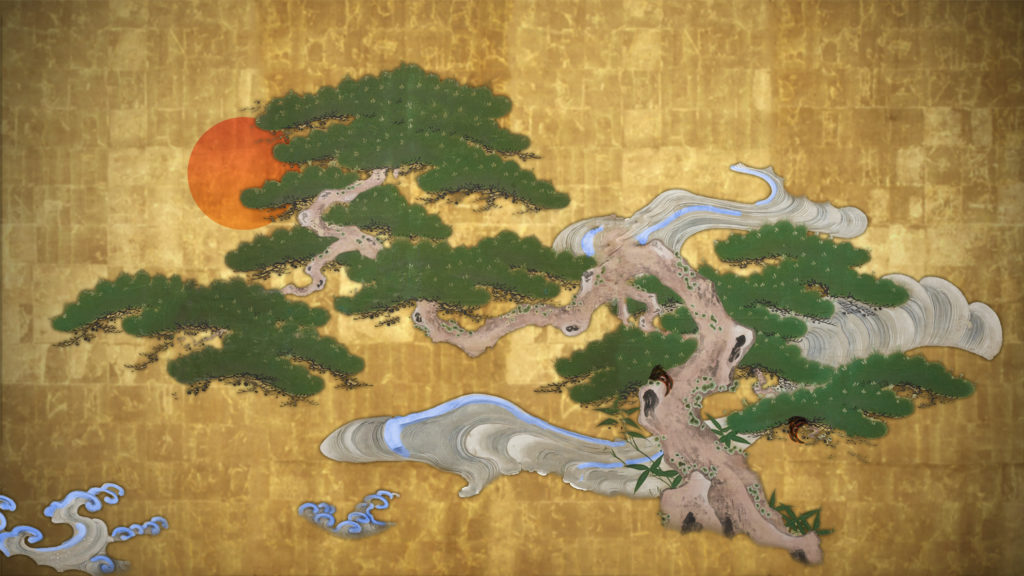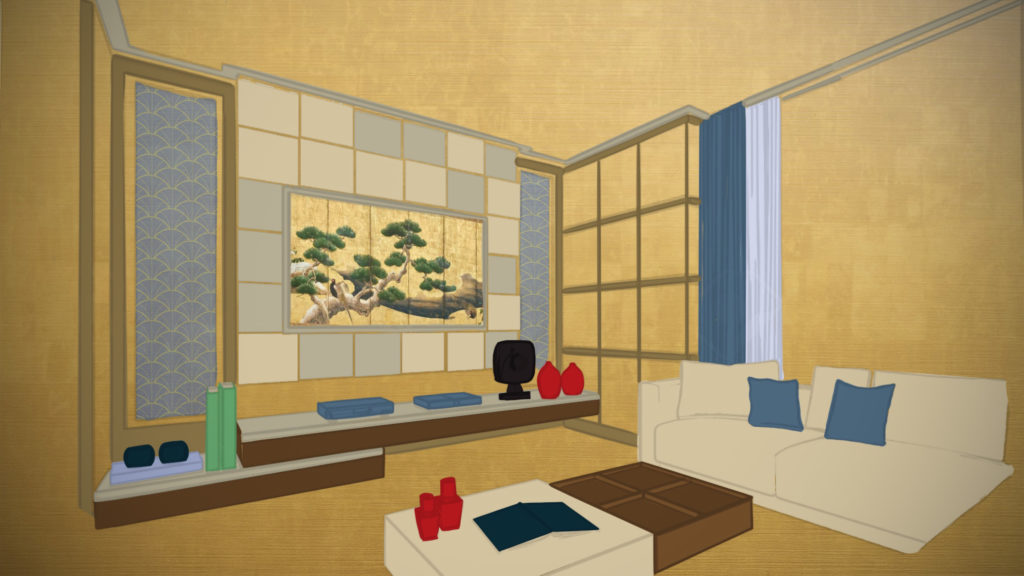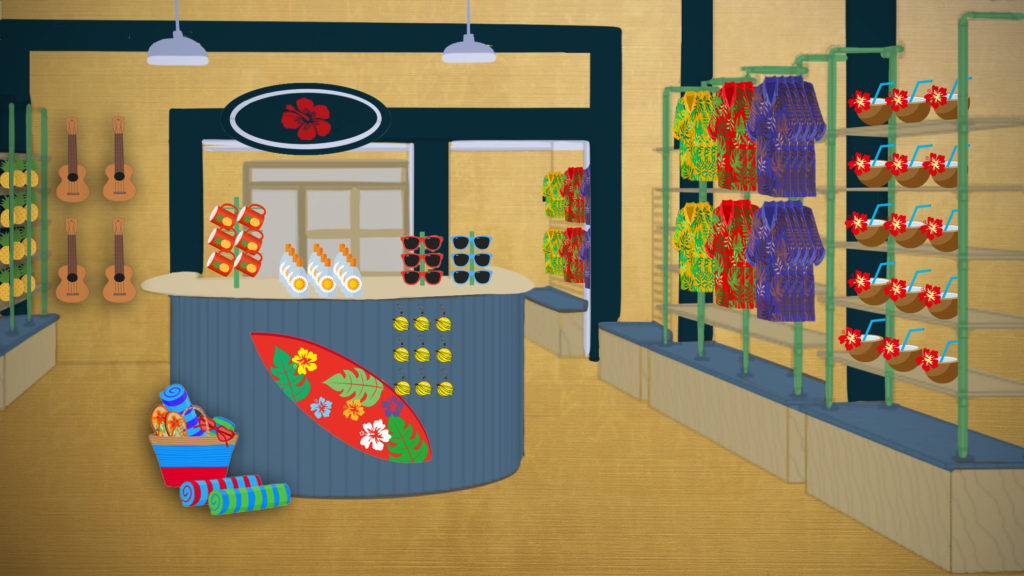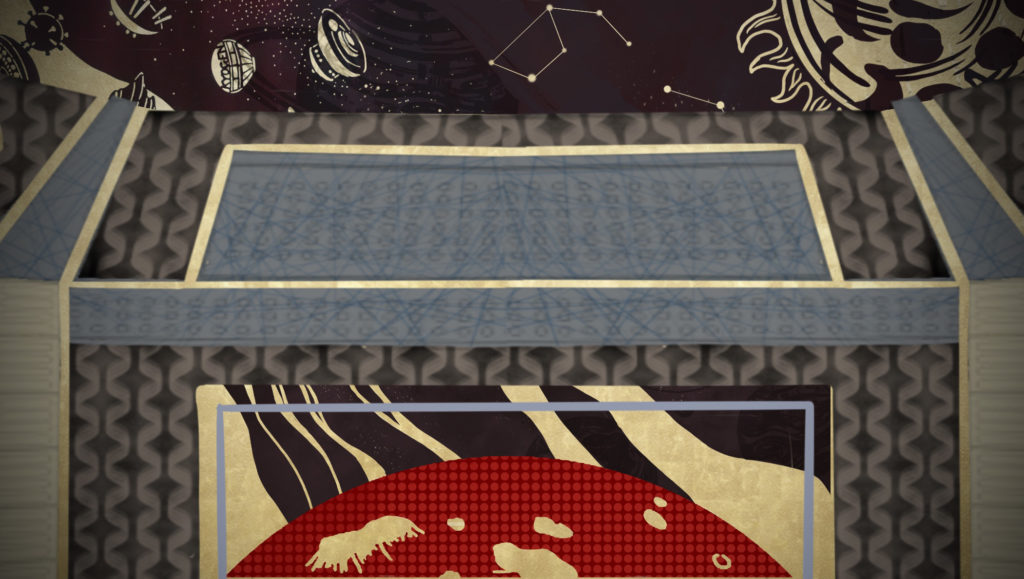As the scenic designer, my role quickly adapted to more of a digital/graphic design role which would be influenced by research from traditional noh and kyōgen stage designs and then adapted to the needs of the scripts as devising was being implemented at the start of the rehearsal process for the various pieces.
During the preliminary design phase, numerous traditional Japanese art forms were gathered. As I started to shift through the findings, self-reflection on how my personal hand and aesthetics did not readily align with this style was important. Due to this self-realization, I knew time and energy would need to go into dissecting line, shape, colors and purposeful use of open spaces which are commonly incorporated in these styles. Added time for research into the methodology and theory as well as practical practice to familiarize my hand with this style sparked interest but also created doubt in my abilities to convey this style in a contemporaneous way that still paid reverence to its history.
The concept for Remotely Kyōgen – Comedy Under the (Virtual) Stars, foundationally seeks to combine the traditional painted pine background found on noh and kyōgen stages, with inspiration from the contemporary art form of Nippon-Ga, a form developed by artist Yamamoto Taro[1] that captures various Japanese styles of painting but then adds a modern twist. Stylistically, the backgrounds are all illustrative to both pay homage to the conventional artwork along with adding a connective visual through-line to the program. The color palettes along with the golden look to the backgrounds are based on Japanese gold leaf practices, adding depth and vibrance to the digital performance platform. Virtual backgrounds were created through an extensive process, starting with high-resolution pictures to accurately capture the gold texture, hand drawn elements, along with a specific color palette and stylistic details became the base imagery, which then took on various experimentations with layers of digital effects and custom-cued transitions. This production is an exploration of rethinking how to visually look at theatre – creating depth and movement in a new digital space while still utilizing fundamental design skills and methodologies.
– Laura Nigon-Holmgren, Remotely Kyōgen (Digital Design and Properties)
[1] For more information on Yamamoto Taro and Nippon-Ga please check out these resources:
“Nippon-Ga, Paintings That Depict the Multi-Faceted Japanese Culture | Taro Yamamoto,” from TEDxKyoto.
“山本太郎のニッポン画大全 Taro Yamamoto Japanese Contemporary Art.” 山本太郎のニッポン画大全 Taro Yamamoto Japanese Contemporary Art.

Pine Tree Background, illustrated by Laura Nigon-Holmgren. 
Mistress’ House, illustrated by Laura Nigon-Holmgren. 
Honolulu Airport, illustrated by Laura Nigon-Holmgren. 
Waikiki Storefronts, illustrated by Laura Nigon-Holmgren. 
ABC Store – Outside, illustrated by Laura Nigon-Holmgren. 
ABC Store – Inside, illustrated by Laura Nigon-Holmgren. 
Pecan Tree Background, illustrated by Laura Nigon-Holmgren. 
Control Room, illustrated by Laura Nigon-Holmgren. 
Control Room Hallway, illustrated by Laura Nigon-Holmgren. 
Engine Room – Back, illustrated by Laura Nigon-Holmgren. 
Engine Room, illustrated by Laura Nigon-Holmgren. 
Captain’s Control Room, illustrated by Laura Nigon-Holmgren. 
Home Office, illustrated by Laura Nigon-Holmgren. 
I.T. Office, illustrated by Laura Nigon-Holmgren.

Jane Traynor and Ethan Castillo open the agemaku for the recording that would be used in the title sequences. 
The agemaku is raised by two people lifting poles tied to the base of the curtain. 
The titles of the shows were colored to match the five colors of the agemaku curtain of the nōgaku stage.